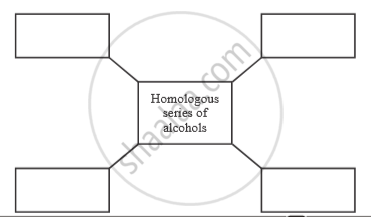Advertisements
Advertisements
प्रश्न
What is the difference between two consecutive homologues:
(1) in terms of molecular mass?
(2) in terms of number and kind of atoms per molecule?
उत्तर
(1) 14 u is the difference between two consecutive homologues in terms of molecular mass.
(2) The two consecutive homologues differ by 1 carbon atom and 2 hydrogen atoms in their molecular formulae.
APPEARS IN
संबंधित प्रश्न
Write the name and formula of the 2nd member of homologous series having general formula CnH2n + 2.
Give the structural formula for 1, 2-dichloroethane
By how many carbon atoms and hydrogen atoms do any two adjacent homologues differ?
Write the names and formulae for the first three members of the homologous series for chloroalkanes.
What is a homologous series? Explain with an example.
Study the different conclusions drawn by students of a class on the basis of observations of preserved/available specimens of plants and animals.
I. Potato and sweet potato are analogous organs in plants.
II. Wings of insects and wings of birds are homologous organs in animals.
III. Wings of insects and wings of bats are analogous organs in animals.
IV. Thorns of citrus and tendrils of cucurbita are analogous organs in plants.
The correct conclusions are:
(A) I, and II
(B) II and IV
(C) I and III
(D) III and IV
Write names of first four homologous series of alcohols.

Which of the following does not belong to the same homologous series?
Define Homologous series.
Consider the carbon compounds having following molecular formula:
(i) C3H6 (ii) C3H8 (iii) C4H6 (iv) C6H6 (v) C6H12
- State the number of double covalent bonds present in C3H6.
- Write the formula of first member of the homologous series to which the carbon compound C4H6 belongs.
- Which one of the above compounds forms a ring structure of carbon atoms?
- Identify, which of the above compounds, is a member of alkane series.
